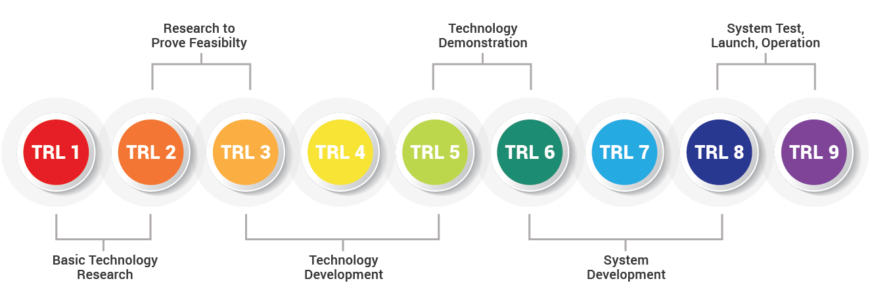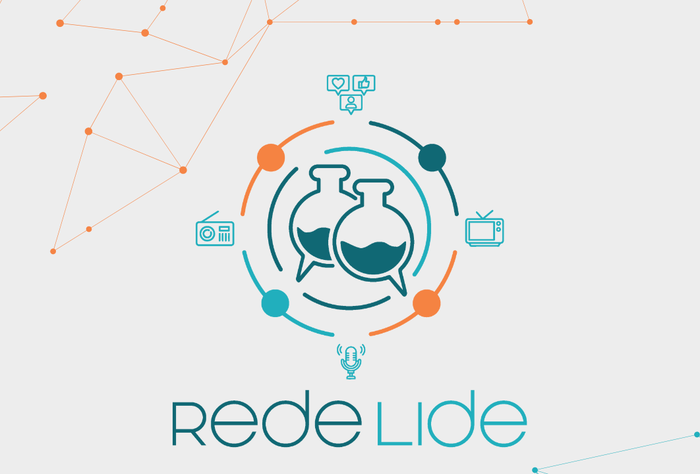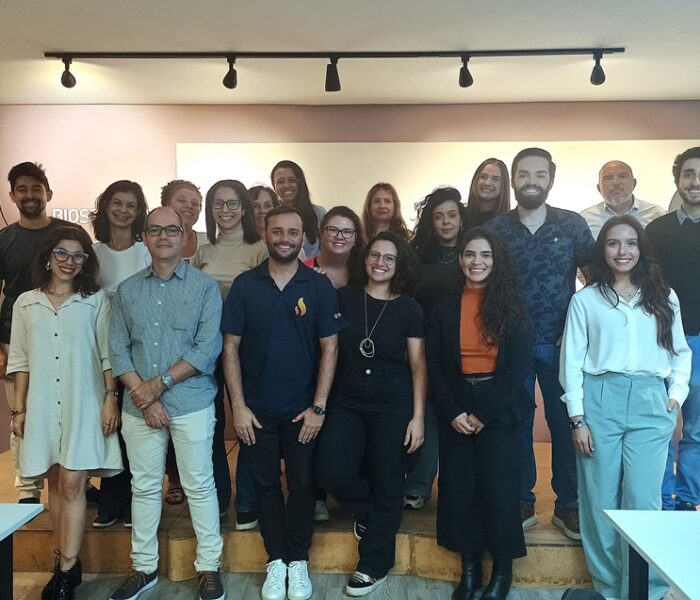Technology Readiness Level – TRL
Technology Readiness Levels (TRL) are a type of measurement system used to assess the maturity level of a particular technology during the research, development, validation, production, and commercialization processes. There are nine technology readiness levels, in which TRL 1 is the lowest and TRL 9 is the highest.
See below the levels and the definition/description of each one:
| TRL 1 | Basic principles observed and reported: the lowest level of technological readiness, in which scientific research begins to be transferred to applied research and development processes. |
| TRL 2 | Technology concept and/or application formulated: the beginning of the inventive step. At this level, the application is still speculative, there is no proof of concept or detailed analysis to support the conjecture. For example, following the observation of a particular characteristic of a material, potential applications can be defined in the form of analytical studies. |
| TRL 3 | Analytical and experimental Proof of Concept of critical functions and/or characteristics: The beginning of research and development activity (R&D). Conduction of analytical studies to adjust the technology to a certain context and laboratory studies to physically validate whether those predictions based on analytical results are correct. These studies and experiments should constitute the “Proof of Concept” validation of the applications/concepts formulated at the previous level. |
| TRL 4 | Component and/or breadboard validation in laboratory environment: basic technological elements must be integrated until the desired performance levels are reached. This validation, still considered of low fidelity, must support the concept formulated before and be consistent with the requirements of potential applications of the system. |
| TRL 5 | Component and/or breadboard validation in relevant environment: At this level, the fidelity of the tested component has to increase significantly. Full applications must be tested in a simulated or otherwise realistic environment. Several new technologies may be involved in the demonstration. |
| TRL 6 | System/subsystem model or prototype demonstration in an operational environment: important level regarding the fidelity of the technology demonstration, in which a representative model or a prototype of the system will be tested in a high-fidelity laboratory environment or a simulated or real operational environment. |
| TRL 7 | Prototype demonstration in an operational environment: The prototype must be close to the real case or at the scale of the planned operating system and the demonstration must be conducted in the intended environment. It aims to ensure confidence in the technology and system management. It will only be performed for technologies or systems that are critical or of high risk. |
| TRL 8 | Actual system completed and qualified in real environment through test and demonstration: This level generally constitutes the end of the system’s technological development. It is proven that the technology works in its final form and the expected conditions. It may include the integration of novel technology into an existing system. |
| TRL 9 | Actual system proven through successful operations: All technologies available in the market pass through this level. In almost all cases, it is the end of the last few hits of the true development of the system. This step allows the improvement of the product beyond the initial plan. |
Ainda não recebemos comentários. Seja o primeiro a deixar sua opinião.






Deixe um comentário